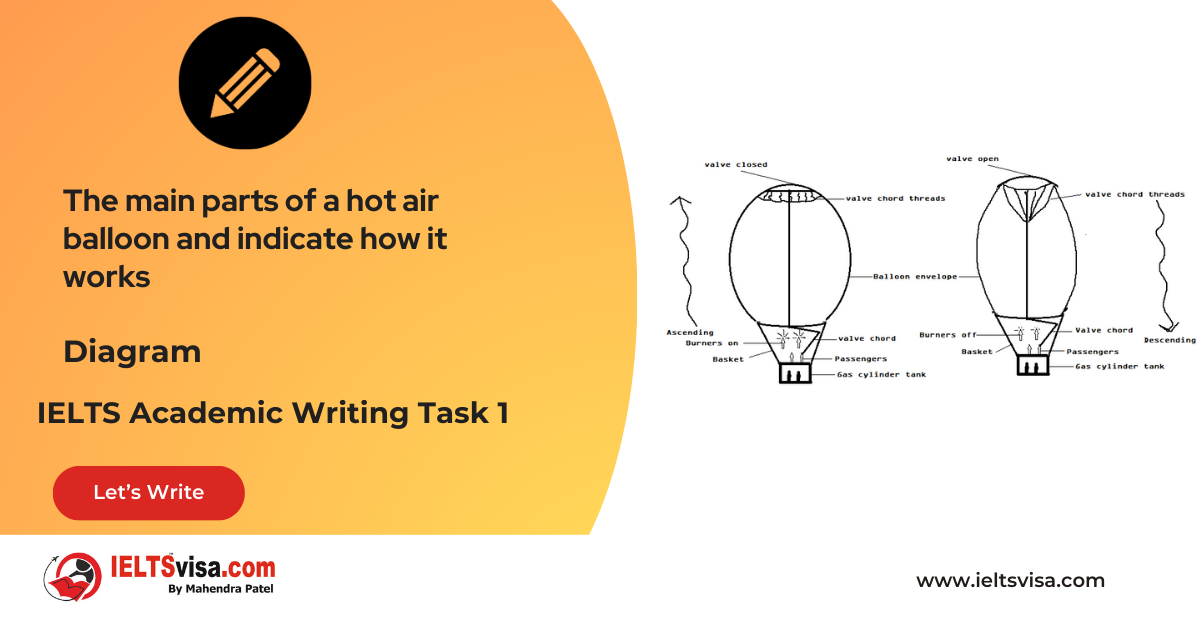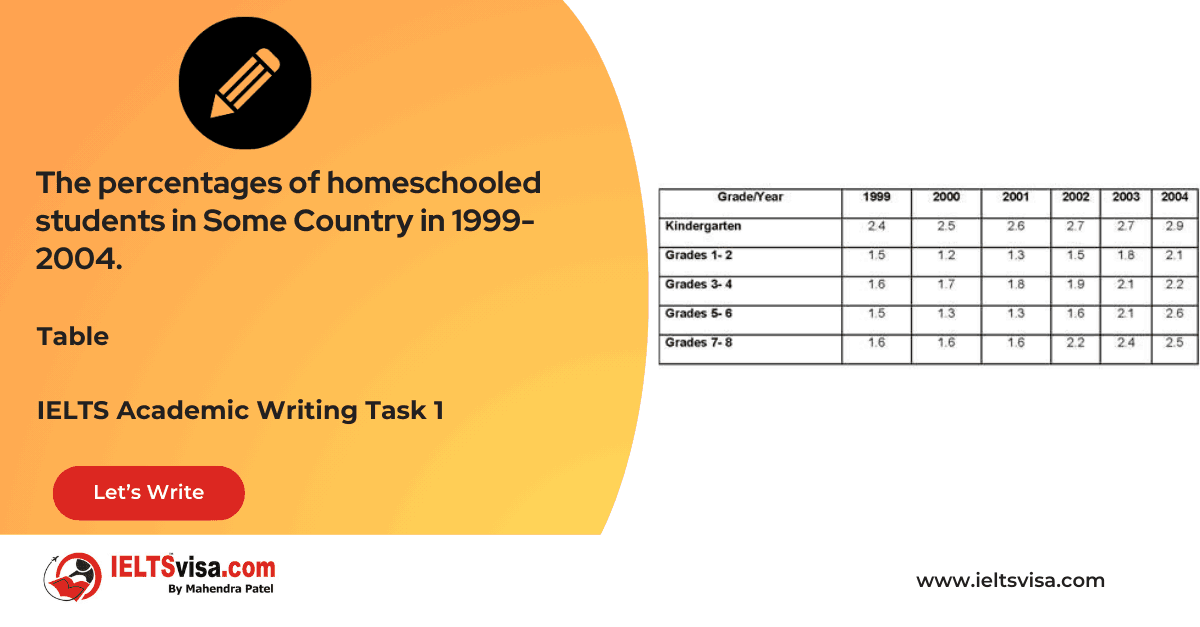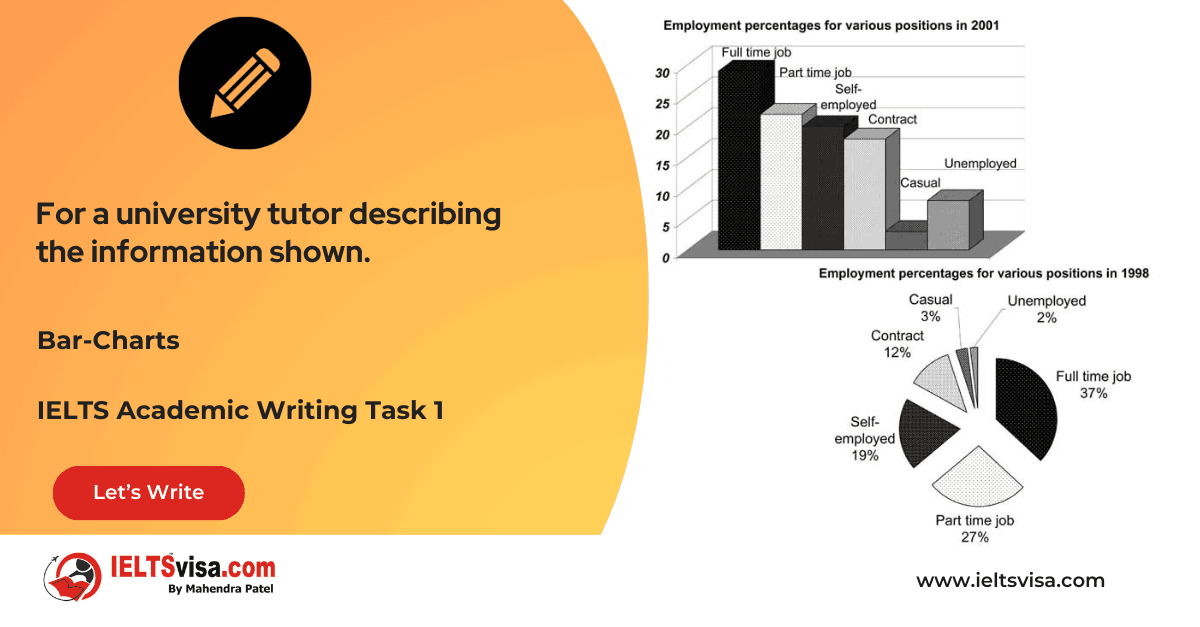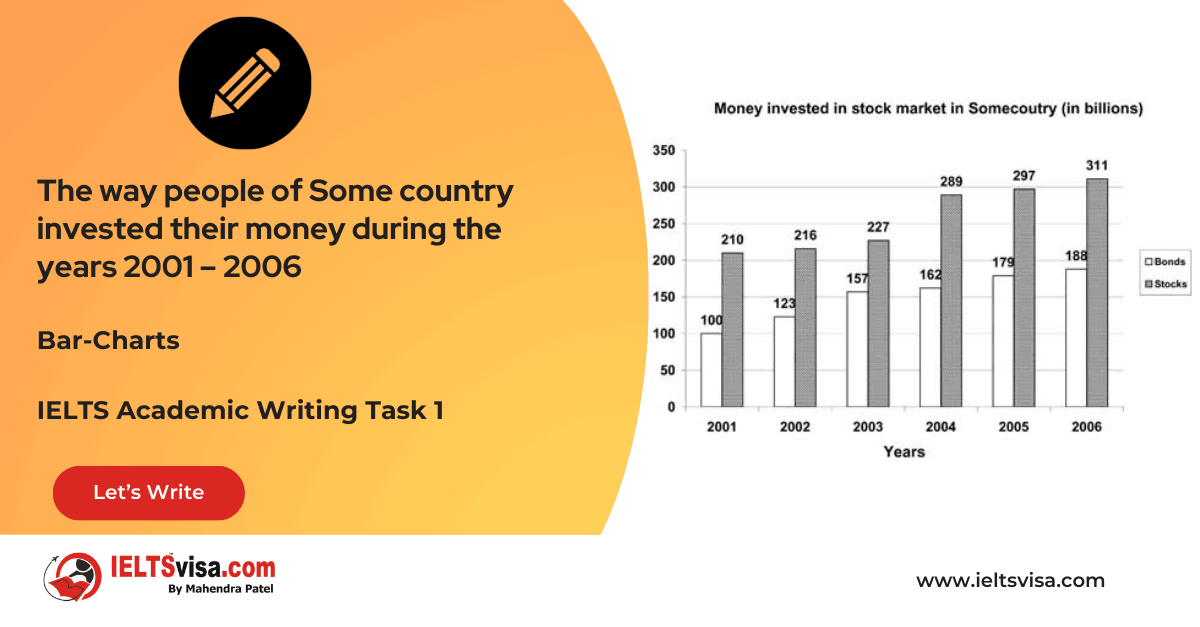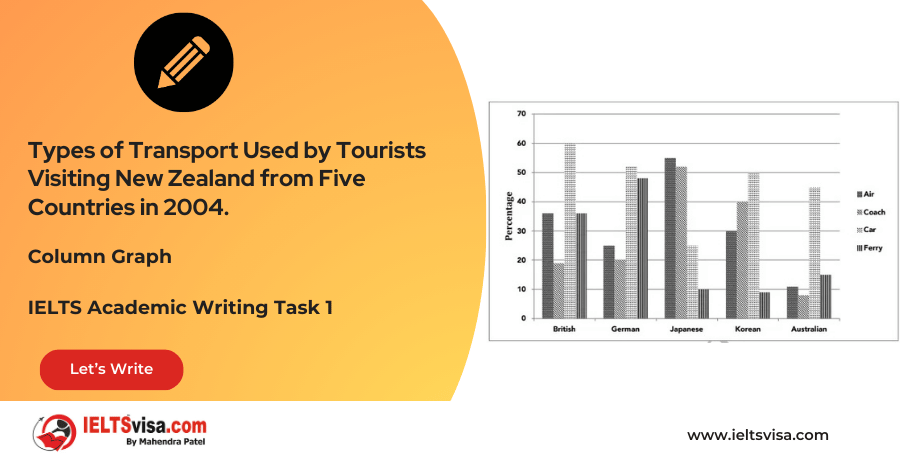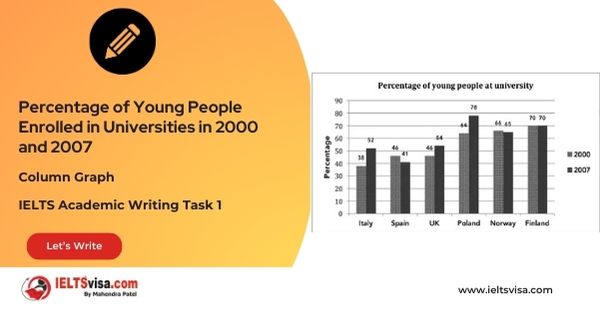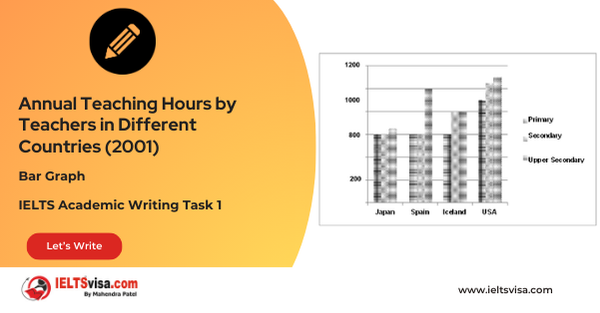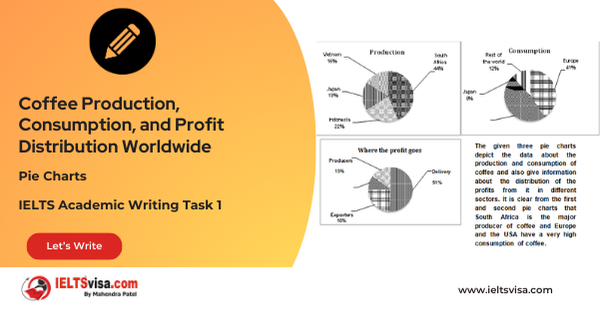Missing Third Person 's'
Lexical Resource & Grammatical Range and AccuracyIELTS Academic Writing Task 1
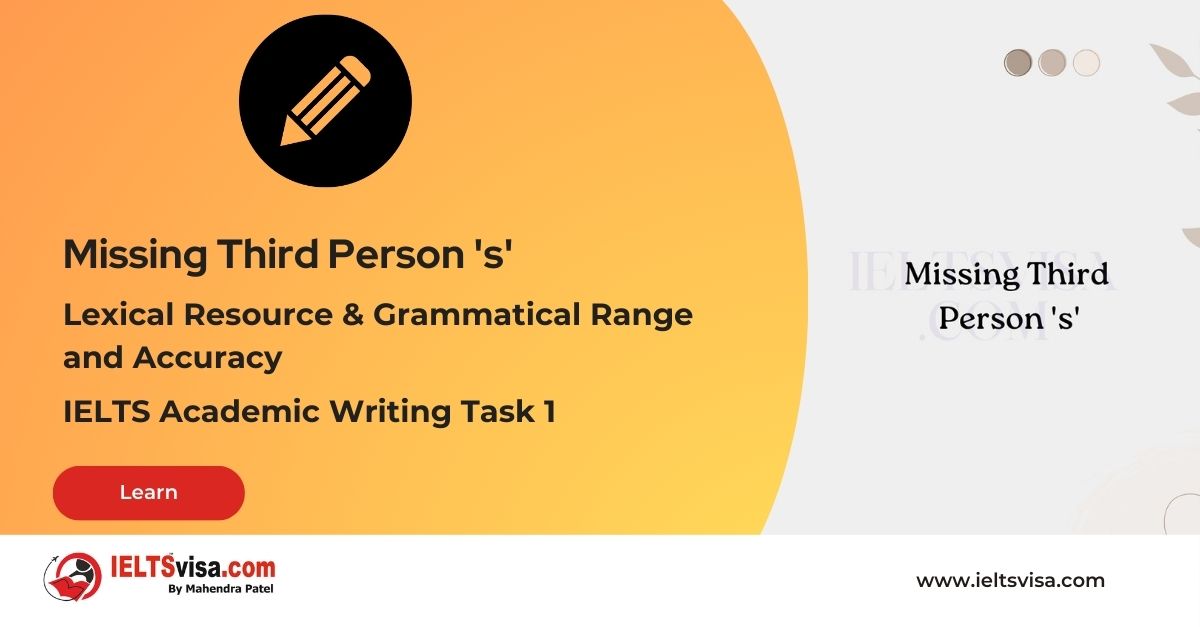
In the IELTS Academic Writing Task 1, demonstrating strong Lexical Resource and Grammatical Range and Accuracy is crucial for achieving a high score.
One common error to avoid is the omission of the third–person singular ‘s’ in verbs. This error occurs when we forget to add the ‘s’ to the base form of the verb when referring to a singular subject.
In this article, we will explore the importance of using the correct verb form with the third–person singular subjects, accompanied by examples and answers to help you identify and rectify this issue effectively.
1. Third Person Singular Verb Forms:
When the subject of a sentence is a singular noun, pronoun, or noun phrase, we need to add the third–person singular ‘s’ to the base form of the verb.
Original Sentence:
He walk to work every day.
Revised Sentence: He walks to work every day.
In the revised sentence, the missing third person singular ‘s’ is added to the verb “walk” to match the singular subject “he.”
2. Omission of Third Person Singular ‘s’ in Present Simple Tense:
The present simple tense requires the addition of the third–person singular ‘s’ to the base form of the verb when the subject is singular.
Original Sentence:
She speak English fluently.
Revised Sentence:
She speaks English fluently.
In the revised sentence, the missing third person singular ‘s’ is added to the verb “speak” to match the singular subject “she.”
3. Omission of Third Person Singular ‘s’ in Present Simple Negative Sentences:
When forming negative sentences in the present simple tense with a singular subject, we use the auxiliary verb “does” and add “not” before the base form of the verb, which still requires the third–person singular ‘s.’
Original Sentence:
He not like spicy food.
Revised Sentence:
He does not like spicy food.
In the revised sentence, the missing third person singular ‘s’ is added to the verb “like” to match the singular subject “he.”
4. Omission of Third Person Singular ‘s’ in Present Simple Questions:
When forming questions in the present simple tense with a singular subject, we use the auxiliary verb “does” before the subject, and the base form of the verb still requires the third-person singular ‘s.’
Original Sentence:
Does she goes to the gym regularly?
Revised Sentence:
Does she go to the gym regularly?
In the revised sentence, the incorrect addition of the third person singular ‘s’ is corrected by removing it from the verb “go” to match the singular subject “she.”
Using the correct verb form with third-person singular subjects is crucial to maintaining grammatical accuracy and clarity in your writing. Practice recognizing singular subjects and ensuring the corresponding verb forms include the third–person singular ‘s.’
Additionally, familiarize yourself with irregular verbs that do not follow this rule. Seeking feedback from others and utilizing grammar resources can further assist you in improving your Lexical Resource and Grammatical Range and Accuracy.
With consistent practice and attention to detail, you will excel in your IELTS examination.




Our Books
Master IELTS Speaking Part 1
IELTS Writing Task 1 Book
IELTS Writing Task 2 Book
Practice IELTS Other Modules
IELTS Listening
The IELTS Listening test assesses how well you can understand spoken English in various contexts. It lasts about 30 minutes and is divided into four sections with a total of 40 questions. The listening tasks become increasingly difficult as the test progresses.
IELTS Academic Reading
The IELTS Academic Reading section assesses your ability to understand and interpret a variety of texts in academic settings. It is designed to evaluate a range of reading skills, including skimming for gist, reading for main ideas, reading for detail, understanding inferences, and recognizing a writer's opinions and arguments.
IELTS Speaking
The IELTS Speaking test assesses your ability to communicate in English on everyday topics. It lasts 11-14 minutes and consists of three parts: introduction, cue card, and a discussion based on the cue card topic.
IELTS General Reading
IELTS General Reading tests your ability to understand and interpret various types of texts. Here are some key areas and types of content you can expect to encounter in the reading section, along with tips for effective preparation.
IELTS Academic Writing Task 1
In IELTS Academic Writing Task 1, you are presented with a visual representation of information, such as graphs, charts, tables, or diagrams, and you are required to summarize, compare, or explain the data in your own words.
IELTS General Writing Task 1
In IELTS General Writing Task 1, you are required to write a letter based on a given situation. The letter can be formal, semi-formal, or informal, depending on the prompt. Here’s a breakdown of the key components to include in your letter
IELTS Academic Writing Task 2
In IELTS Academic Writing Task 2, you are required to write an essay in response to a question or topic. Here’s a guide to help you understand the essential elements of this task
IELTS Exam Tips
To succeed in the IELTS exam, practice regularly, familiarize yourself with the test format, improve your vocabulary, develop time management skills, and take mock tests to build confidence.
Grammer for IELTS
Grammar is the foundation of effective communication in English. Understanding tense usage, subject-verb agreement, and sentence structure enhances clarity and coherence in writing and speaking.
Vocabulary for IELTS
Vocabulary plays a crucial role in the IELTS (International English Language Testing System) exam, especially in the Speaking and Writing sections. Here’s an overview of why vocabulary is important and how it impacts your performance
RECENT IELTS SAMPLES QUESTIONS AND ANSWERS
Task 1 – Diagram – A conference hall built in 1981 and planned for 2020
20:00 Start Pause Stop [df_adh_heading title_infix="IELTS Writing Task 1 Question" use_divider="on"...
Task 1 – Table – The percentages of homeschooled students in Some Country in 1999-2004.
20:00 Start Pause Stop [df_adh_heading title_infix="IELTS Writing Task 1 Question" use_divider="on"...
Task 1 – Table – For a university tutor describing the information shown.
20:00 Start Pause Stop [df_adh_heading title_infix="IELTS Writing Task 1 Question" use_divider="on"...
Task 1 – Bar-Charts – The way people of Some country invested their money during the years 2001 – 2006
20:00 Start Pause Stop [df_adh_heading title_infix="IELTS Writing Task 1 Question" use_divider="on"...
Task 1 – Diagram – Rainwater Harvesting and Conversion to Drinking Water in an Australian Town.
20:00 Start Pause Stop [df_adh_heading title_infix="IELTS Writing Task 1 Question" use_divider="on"...
Task 1 – Column graph – Percentage of Young People Enrolled in Universities in 2000 and 2007.
20:00 Start Pause Stop [df_adh_heading title_infix="IELTS Writing Task 1 Question" use_divider="on"...
Task 1 – Bar Graph – Annual Teaching Hours by Teachers in Different Countries (2001)
20:00 Start Pause Stop [df_adh_heading title_infix="IELTS Writing Task 1 Question" use_divider="on"...
Task 1 – Pie Charts – Coffee Production, Consumption, and Profit Distribution Worldwide
20:00 Start Pause Stop [df_adh_heading title_infix="IELTS Writing Task 1 Question" use_divider="on"...
Task 1 – Column graph – Types of Transport Used by Tourists Visiting New Zealand from Five Countries in 2004.
20:00 Start Pause Stop [df_adh_heading title_infix="IELTS Writing Task 1 Question" use_divider="on"...

